4th Grade Performance Task
New York State Alternative Assessment in Science Project (NYSED)
1996 Administration
Description:
Students determine the relative amounts of oils in food. They then
apply their understanding to an additional situation. The task assesses
students' abilities to make simple observations, make generalized
inferences from their observations, and apply their understanding
to an additional situation.
This task is designed to take students approximately 8-10 minutes
to complete.
Overall Task Content Area:
- Physical Science
Specific Knowledge Areas:
-
Performance Expectations:
- conducting investigations
- gathering, organizing, and representing data
- formulating conclusions from investigational data
- applying scientific principles to develop explanations and solve
new problems
National Science Education Standards:
4 B PS 1: Properties of matter: Grades K-4
1.1 Objects have many observable properties, including size,
weight, shape, color, temperature, and the ability to react with
other substances. Those properties can be measured using tools,
such as rulers, balances and thermometers.
4 A SI 1: Abilities necessary to do scientific inquiry:
Grades K-4
1.4 Use data to construct a reasonable explanation. This
aspect of the standard emphasizes the students' thinking as they
use data to formulate explanations. Even at the earliest grade levels,
students should learn what constitutes evidence and judge the merits
or strength of the data and information that will be used to make
explanations. After students propose an explanation, they will appeal
to the knowledge and evidence they obtained to support their explanations.
Students should check their explanations against scientific knowledge,
experiences, and observations of others.
(Use the "hot" link on the PALS home page
to check the full text of related National Science Education Standards,
if desired.)
National Council of Teachers of Mathematics:
AL4: Analyze change in various contexts:
Grades pre K-5 a. describe qualitative change, such as a student's
growing taller
RP4: Select and use various types of reasoning and methods
of proof:
Grades pre K-5
General Instructions to the Teacher:
This task is designed to take students approximately 8-10 minutes
to complete.
Students will be working individually during this exercise.
Students should be ready to work as soon as the period begins.
The materials should be set out at each lab station, if possible.
A central supply area, if needed, should be easily accessible. All
supplies should be clearly labeled.
Materials for Testing Foods:
The teacher needs:
At this station students should have:
- 6 brown paper squares (5 cm x 5 cm)
- 4 food samples (see preparation section)
- Dropper bottle with vegetable oil
- Dropper bottle with water
- Bag samples A and B
- Waste container (cup or small pail)
- Paper towels
- Test sheet
Advance Preparation:
- Use food samples which can be picked up easily with fingers.
- It is also important that the food samples leave distinctive
marks on the brown paper. Some good examples are listed below:
- cheese
- snack crackers
- pepperoni/salami
- peanuts
- apple slices
- peeled carrots
- cucumber slices
- Two of the food samples should contain oil.
- Try your samples out on the brown paper bag the student will
be using to be sure that the students will get the desired results.
- Brown paper squares can be cut from a paper grocery bag. The
bag should not have any type of special coating to resist wetness.
- The type of paper bag squares used in the experiment may affect
the students' results. Be sure to test the oil and water on the
bag before the students do their testing.
- Sample bag A- a plastic sandwich bag. The plastic sandwich bag
should not have a zip lock top. This could lead the students
to an inaccuracte assumption based on the premise of the experiment.
- Sample bag B- a paper lunch bag.
Safety:
- Advise the students not to eat the test sample used
in the experiment.
- Be careful.
- Teachers and students should always exercise appropriate safety
precautions and utilize appropriate laboratory safety procedures
and equipment when working on science performance tasks.
Extensions/modifications:
- Task does not easily lend itself to including mathematical
criteria in the rubric.
Advanced Preparation Set Up:
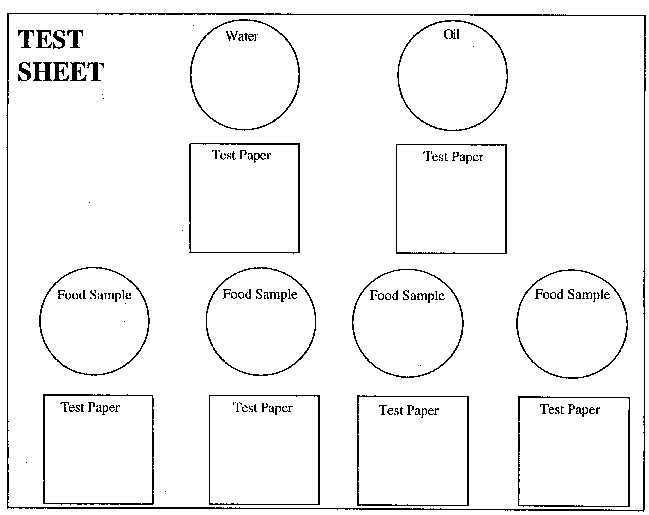
| Prepare food testing samples.
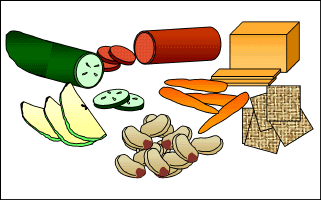
|
Cut paper bag squares.
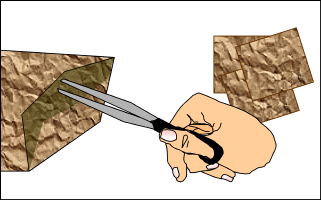
|
| Prepare water and oil bottles.
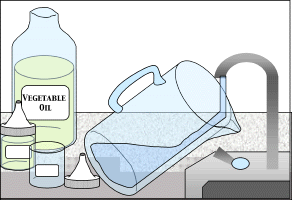
|
Label dropper bottles.
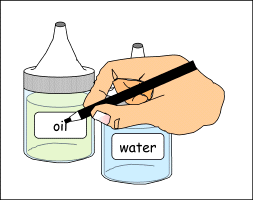
|
| Test samples on paper.
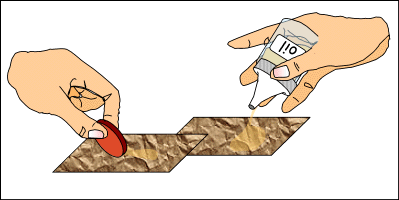
|
Label bags.
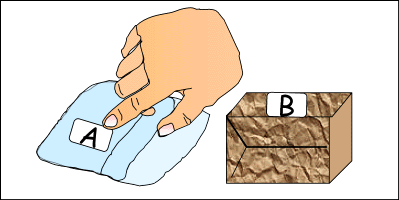
|
|


